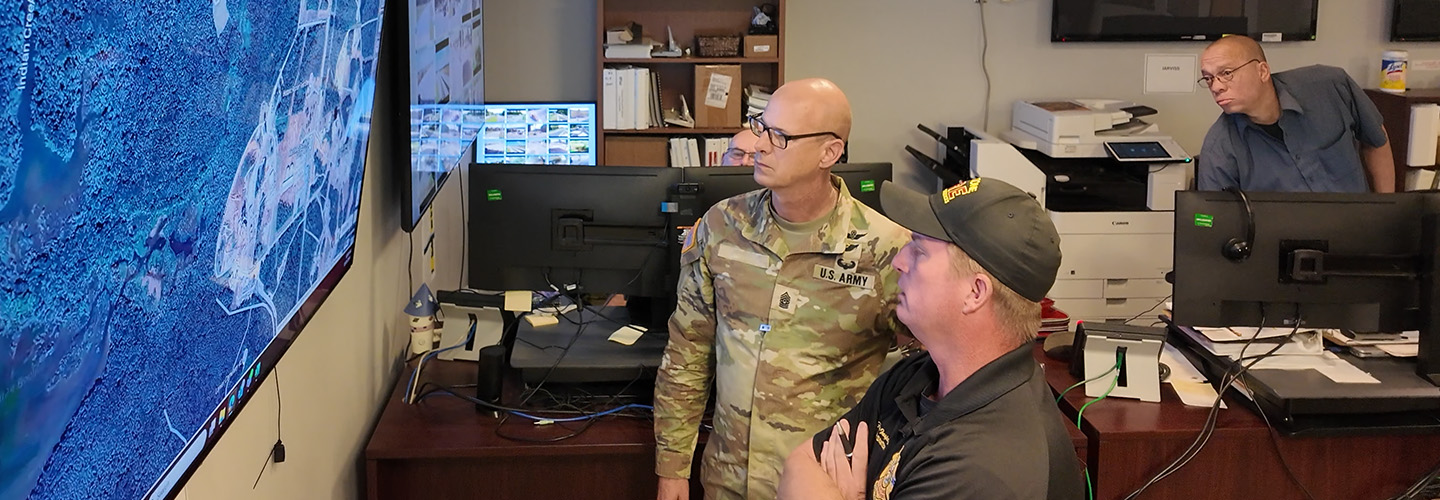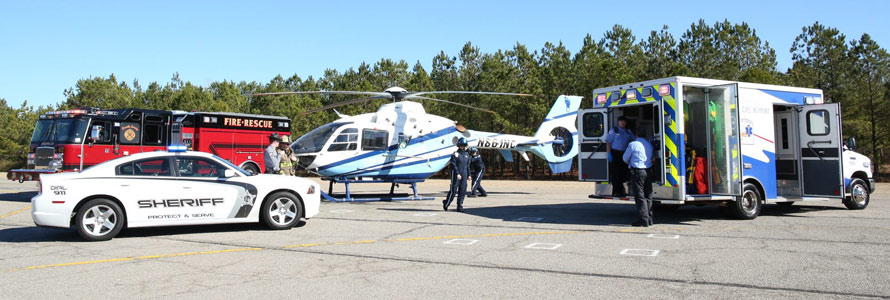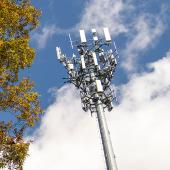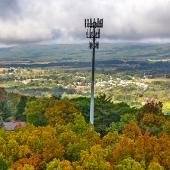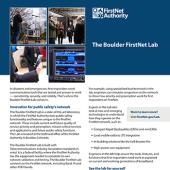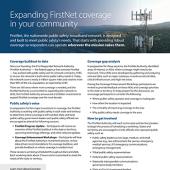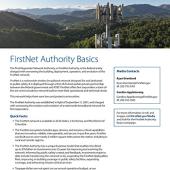Redstone Arsenal is home to multiple U.S. Army commands, NASA’s Marshall Space Flight Center, 2 federal law enforcement agencies, and even a 35,000-acre wildlife refuge. Over 50,000 civilians and contractors work on site at the Army base in Huntsville, Alabama every day, making it “a city within a city.” When there’s an emergency, it is critical that first responders on base can communicate across agencies, as well as with their counterparts from the surrounding area.
Every day, the Redstone Arsenal Fire and Emergency Services team rises to the challenge of interoperating with multiple federal agencies to protect residents, visitors, and staff. They look to FirstNet, the nationwide public safety broadband network, to ensure seamless communication during complex federal public safety operations.
Communications infrastructure enables mission-critical operations
Redstone Arsenal knew that robust broadband infrastructure would be essential for supporting emergency communications across its expansive campus. As part of an Army-wide partnership with FirstNet to build towers at 72 locations nationwide, Redstone Arsenal was the first to break ground. Using direct feedback from U.S. Army and public safety officials on the areas that needed improved coverage, FirstNet developed a build-out plan that became a model for other Army facilities.
“We were the first [U.S. Army] installation to have an infrastructure improvement plan,” said Robert Simmons, Redstone Arsenal Fire and Emergency Services Deputy Fire Chief. “We [with AT&T] built three macro towers, twenty-eight small cell antennas, and laid about fifty miles of fiber.”
This infrastructure-first approach included strategic placement of small cell antennas across all of the base’s facilities, regardless of which agency operated on the property. Acting as localized cell towers, these wireless access points closed existing communication gaps. “Some of these small cell antennas are on NASA's Marshall Space Flight Center or the FBI's training facility,” said Simmons. “We didn't just look at Army property when we started deploying the infrastructure improvements — and now we've improved the ability to access the network.”
Transforming response with situational awareness tools
With nearly 75 tenant partner organizations on base, interoperability for the Arsenal’s public safety personnel is key. For personnel tracking and mapping, Redstone Arsenal adopted Intrepid Networks' Response for FirstNet (Intrepid). This solution changed how command staff maintain situational awareness during emergencies, helping first responders make informed decisions.
“Previously, we would have to rely on a person getting on a radio or making a face-to-face communication to say, ‘Hey, I’m safe. Here’s where I am,’” said Simmons. “Now, we can look in Intrepid and see that person’s location in real time.”
The tool allows Redstone Arsenal Fire and Emergency Services to easily work with their partners across the base. “We don't control the FBI or the ATF [Bureau of Alcohol, Tobacco, Firearms and Explosives], we don’t control the NASA police,” said Operations Specialist Marcel Chevalier, who works out of the Arsenal’s Emergency Operations Center. “But if I need their support for something, knowing that they have a FirstNet device, I can plug them into Intrepid.”
Simmons and his team use the resource management tool to distribute devices across more personnel and support multiple talk groups at once. By offloading non-emergency communications from critical radio frequencies, the network improves communication clarity for first responders during emergencies. The tool also integrated FirstNet’s push-to-talk capabilities and Redstone Arsenal’s land mobile radio system, allowing command staff to maintain situational awareness, even when they’re not on base.
“I've been as far away as San Antonio, Texas, or Augusta, Georgia, and I’ve been able to hear [radio] traffic because it was integrated into the LTE network,” said Simmons.
Advanced interoperability and planning
Since implementing Intrepid, Redstone Arsenal has used the technology for both everyday response and planned scenarios. During a hazardous materials exercise, the system enabled command staff to quickly monitor and guide operations, including mapping hazardous areas in near real time and coordinating response efforts.
“The Army comes and evaluates our ability to respond to large-scale incidents,” said Chevalier. “Our fire department command center was on the ground displaying information that was happening faster than the evaluators could even run through their scenario. He had already gotten wind direction, wind speed, and put a plume on the map that all of the command and other organizations that are in the emergency operations center can see.”
With the aid of FirstNet tools, Redstone Arsenal has been able to develop standardized protocols for all agencies involved in planned events on base. During annual events, like the Army's birthday celebration, these protocols ensured stakeholders were aligned, streamlining event prep for public safety.
“We have developed map overlays and channels for events we do regularly,” said Chevalier. “We have marathons so we're able to put those overlays with the route where water points are, where EMTs will be set up, and we don't have to adjust.”
Coordination between organizations with separate systems and protocols can be a significant challenge. Redstone Arsenal's integrated approach keeps public safety partners connected.
How the FirstNet Authority supports federal agencies
FirstNet, the nationwide public safety broadband network, supports federal public safety operations, but the network needs the input of public safety leaders to continue to evolve into the future. The FirstNet Authority's Government Engagement team has worked closely with many federal agencies in public safety, emergency management, and homeland security to advance broadband planning and ensure FirstNet meets their needs.
This collaboration extends through the Federal Agency Point of Contact (APOC) group, which includes representatives from over two dozen federal departments and agencies. Through monthly engagements with the FirstNet Authority, federal APOCs help distribute information and gather feedback, ensuring FirstNet continues to provide what federal public safety needs.
“The value of having the FirstNet Authority is tremendous,” said Simmons. “It’s not just a business-related decision when we're talking about the FirstNet Authority — decisions are being made based off the needs of the user.”


